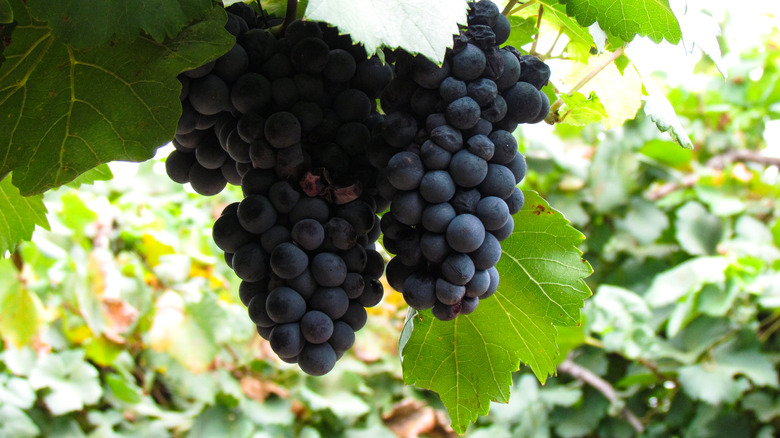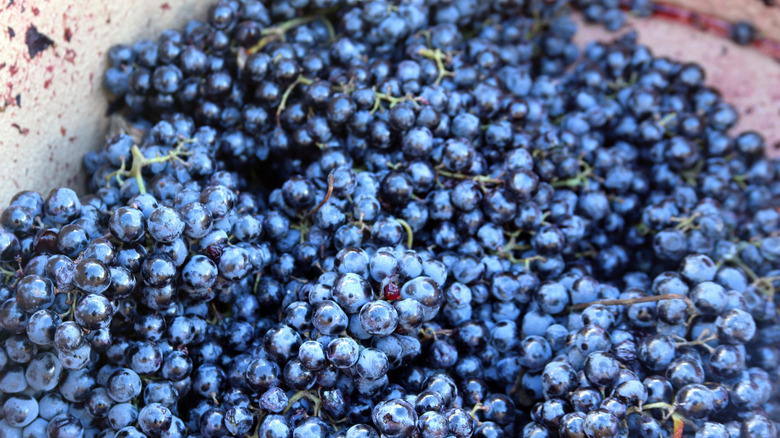The Grape That Made Drinking Wine During Prohibition Possible
The prohibition of alcohol in the United States occurred between 1920 and 1933 and is considered by some to be one of the more glaring failures in legislative history. The Library of Congress notes that the anti-alcohol movement initially received broad support, but it didn't take long for people to change their minds once they saw Prohibition in action. It would ultimately add two amendments to the U.S. Constitution — the 18th Amendment, which was ratified to prohibit the making and selling of alcohol, and the 21st Amendment, which repealed it.
Prohibition failed to curb drinking and led to a heyday for organized crime. Britannica notes that the American Mafia arose during this period from networks of Italian bootleggers. Al Capone, perhaps the most infamous gangster in history, made $100 million off Prohibition by 1927.
But it wasn't just criminals who got the nation soused. The U.C. Davis Library cites a loophole in the law allowing each household to make "200 gallons of non-intoxicating cider and fruit juice per year." In response, some grape vendors, as noted by Serious Eats, warned juice-making customers to "not place the liquid in a jug away in the cupboard for twenty days, because then it would turn into wine." Lo and behold, lots of people made this "mistake," which is exactly what the grape growers wanted.
The wine was terrible
Prohibition was a boon for the grape industry, but only in terms of quantity, not quality. The National Museum of American History notes that the law banned the distribution of alcohol, but what's to stop you from selling grapes? Serious Eats explains that grape prices went from $9.50 per ton in 1919 to $82 per ton in 1921, driven by home winemaking. This led to a massive expansion of vineyards in California, which began shipping grapes to the East Coast. Unfortunately, a cross-country journey is tough on fruit, so vineyard owners began growing a particularly hearty type of grape, called Alicante Bouschet, which grew in high volume and had thick skin to protect it during transport. There was a problem though — Alicante grapes make terrible wine.
According to Eater, Alicante grapes made it easy for bootleggers to cheat their customers. They have red flesh in addition to red skin, so they still yielded red juice after two or three pressings. This type of wine only had about 8% alcohol (Masterclass notes that fortified wines should average about 18%), and it was heavily diluted with sugar and water.
By the time Prohibition was repealed, Eater reports that 75% of California's vineyards were dedicated to Alicante grapes. As soon as other alcoholic drinks were legal again, wine sales plummeted. California winemakers had to return their focus to quality over quantity, but according to Serious Eats, it took until 1975 for wine consumption to return to pre-Prohibition levels.

